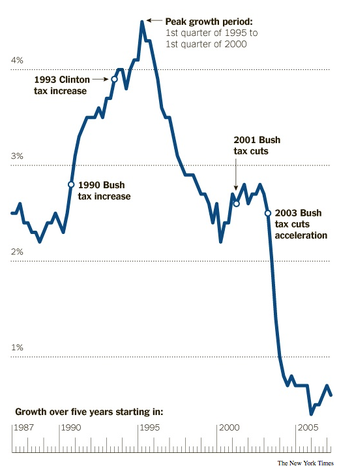 Not that I’m surprised about this considering that here in the US many Americans seem adverse to drinking water from the tap, preferring to drink it from non-biodegradable disposable plastic bottles and line the pockets of international conglomerates like Nestle. It is just another sign that our government is serves these multinationals.
Not that I’m surprised about this considering that here in the US many Americans seem adverse to drinking water from the tap, preferring to drink it from non-biodegradable disposable plastic bottles and line the pockets of international conglomerates like Nestle. It is just another sign that our government is serves these multinationals.
United Nations: General Assembly makes progress on the human rights to water and sanitation, but only so far as the USA permits
AMNESTY INTERNATIONAL
PUBLIC STATEMENT
26 November 2013
The UN General Assembly’s Third Committee on 21 November adopted a resolution on “The human right to safe drinking water and sanitation”. Amnesty International welcomes this resolution; the first in which all UN member States affirm that the rights to water and sanitation are legally binding in international law. However, we are deeply disappointed that as a result of pressure from the USA, the main sponsors of the resolution, Germany and Spain, removed from the resolution a paragraph containing a critical affirmation of the contents of these rights. It is outrageous that one country’s view – for which it has not provided any plausible explanation – has been given priority over the expressed view of the many other countries supporting this language. The US position stands in stark contrast to the views of the UN Human Rights Council and the UN Committee on Economic, Social and Cultural Rights, and against the interests of the billions of people who lack adequate access to water and sanitation.
A Glaring Omission
Until moments before its adoption, the draft General Assembly resolution had recognised that “the human right to safe drinking water and sanitation entitles everyone, without discrimination, to have access to sufficient, safe, acceptable, physically accessible and affordable water for personal and domestic use and to have physical and affordable access to sanitation, in all spheres of life, that is safe, hygienic, secure, and acceptable and that provides privacy and ensures dignity“.
The definition under discussion was based on that contained in a resolution of the UN Human Rights Council adopted in September 2013, which was co-sponsored by 111 States and was adopted by consensus. At the time, the USA was the only country that disassociated itself from the definition of these rights and stated that it did not agree ‘with the expansive way this right has been articulated’. However, it has not explained what aspects of this definition it does not accept.
The draft of this resolution that included this important affirmation of the content of the rights to water and sanitation in the General Assembly enjoyed the support of 81 cosponsors from all parts of the world. Only the USA consistently opposed inclusion of text endorsing the contents of these rights. It is regrettable that the main sponsors removed this language at the last minute at the behest of the USA.
The USA’s view that the definition of the rights set out by the Human Rights Council is ‘expansive’ cannot be sustained. That definition of these rights is in fact limited and relates to essential elements without which they would only be hollow promises. People are entitled to water and to sanitation that is within reasonable reach and at a price they can afford. People have a right to enough water to wash their clothes, prepare their food and keep themselves and their homes clean. People have a right to sanitation which they can use without risk of disease, injury or assault, in all locations where they spend significant time, which they can access in dignity and without spectators and without being forced to abandon those of their social and cultural sanitation practices that they wish to maintain. Such rights are only ‘expansive’ if one adopts a 19th century understanding of hygiene and of government duties to ensure the provision of public services.
It is therefore incumbent upon the US government to explain which of these aspects of the rights it cannot accept and why. It owes this explanation to the world at large, and to Americans, who deserve to know what aspects of their rights to water and sanitation their Federal government refuses to guarantee. In fact, during the official mission to the USA in 2011, the UN Special Rapporteur on these rights identified several instances where the government was not taking adequate steps to ensure quality, affordability and access to water and sanitation.
Why Is the US Getting in the Way of International Efforts to Make Clean Water a Basic Human Right?
By Shiney Varghese, Alternet
The United States is the only country marring the good works of a UN resolution on the right to safe drinking water and sanitation.
The debate isn’t over yet. Even though the references to the content of the rights to water were removed from the November resolution, UNGA’s Third Committee endorsed the UNHRC resolution of September 2013, which elaborates the underlying essential elements of these rights. Thus, reintroducing the content of these rights in future texts on rights to water and sanitation should be quite straightforward.
The issue will likely come up again at the UN General Assembly next year. For the supporters of the draft resolution this offers an opportunity to reintroduce the removed language. For the United States too, that will provide a chance to stand on the right side of history, rather than holding back progress.
If and when a UN GA resolution is adopted with these amendments, it will indeed be a big step forward in advancing rights-based approaches to development. Yet, we need to be mindful that this will only be a baby step towards ensuring adequate access to water and sanitation for world’s poor. It will require sustained work at multiple levels and spaces, including rethinking our water intensive development trajectory, to make it a reality for all.
The human rights and wrongs of Nestlé and water for all
By Pul Muir, The National
Having safe water to drink should be regarded as an inalienable human right, say campaigners, and last week the United Nations General Assembly put its weight behind them, approving a draft resolution calling on member states to make universal access a reality.Having safe water to drink should be regarded as an inalienable human right, say campaigners, and last week the United Nations General Assembly put its weight behind them, approving a draft resolution calling on member states to make universal access a reality. [..]
The achievement of this life-saving objective, however, will likely be undermined by the privatisation of water rights and commoditisation – subjecting the most precious substance on the planet to the vagaries of the market.
At the World Water Forum in the Netherlands in 2000, Nestlé and other corporations with a financial interest in controlling the world’s drinking water succeeded in having access to it officially downgraded from a “right” to a mere “need”.
The Nestlé chairman and former CEO Peter Brabeck-Letmathe said that “access to water should not be a public right”. His company and others have since been taking control of aquifers that local communities rely on for drinking water – and bottling it for a profit.
Illustration by Sarah Lazarovich for The National

 Not that I’m surprised about this considering that here in the US many Americans seem adverse to drinking water from the tap, preferring to drink it from non-biodegradable disposable plastic bottles and line the pockets of international conglomerates like Nestle. It is just another sign that our government is serves these multinationals.
Not that I’m surprised about this considering that here in the US many Americans seem adverse to drinking water from the tap, preferring to drink it from non-biodegradable disposable plastic bottles and line the pockets of international conglomerates like Nestle. It is just another sign that our government is serves these multinationals. One of the first things you notice in the chart is that the American economy was not especially healthy even before the financial crisis began in late 2007. By 2007, remarkably, the economy was already on pace for its slowest decade of growth since World War II. The mediocre economic growth, in turn, brought mediocre job and income growth – and the crisis more than erased those gains.
One of the first things you notice in the chart is that the American economy was not especially healthy even before the financial crisis began in late 2007. By 2007, remarkably, the economy was already on pace for its slowest decade of growth since World War II. The mediocre economic growth, in turn, brought mediocre job and income growth – and the crisis more than erased those gains.
Recent Comments